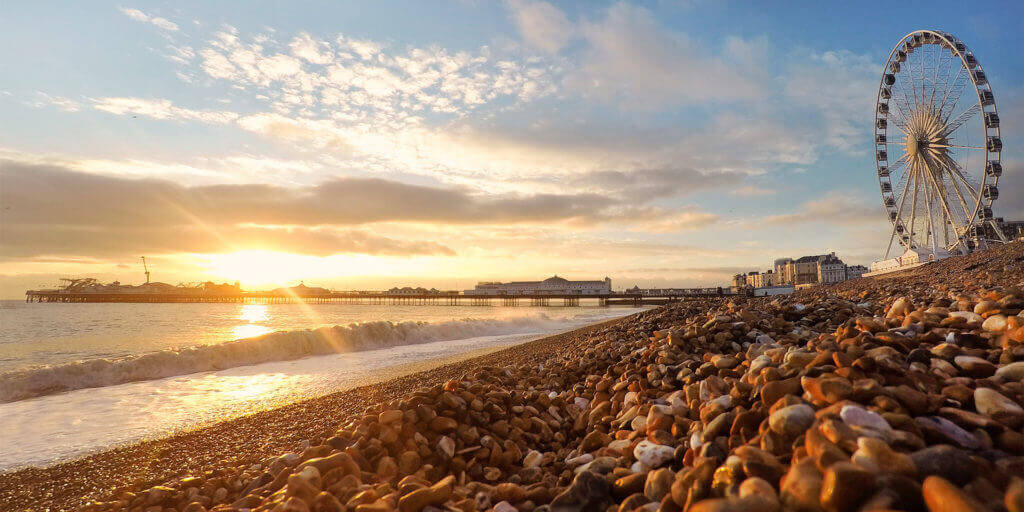
Despite a slowing in demand from the commercial segment, the continued year-on-year growth in top and bottom line performance at hotels in the UK was fuelled by the individual and group leisure segments this month, according to the latest worldwide poll of full-service hotels from HotStats.
As the summer holidays began in earnest, strong demand levels enabled hotels in the UK to leverage average room rate to achieve a 3.1% increase, to £112.89, which was more than sufficient to offset the 0.6 percentage point decline in room occupancy to 82.1%.
As a result of the movement in volume and price, a 2.3% year-on-year increase in RevPAR was recorded at hotels in the UK, to £92.64. This positioned RevPAR levels for the month of August firmly above the year-to-date average of £88.54.
For hotels in the UK, demand from the leisure segment this month comprised 36.6% of the total, compared to 30.3% for the 12 months to August 2017, with year-on-year rate growth recorded in both the individual leisure (+3.8%) and group leisure (+3.5%) segments.
Profit & Loss Key Performance Indicators – Total UK (in GBP)
August 2017 v August 2016
RevPAR: +2.3% to £92.64
TrevPAR: +2.0% to £134.17
Payroll: + 0.3 pts to 28.4%
GOPPAR: +1.1% to £50.33
In addition to the growth in Rooms Revenue, a 0.8% year-on-year uplift in Food and Beverage revenue, on a per available room basis, contributed to the 2.0% increase in TrevPAR, to £134.17. And in spite of the 0.3 percentage point increase in payroll, to 28.4% of total revenue, hotels in the UK recorded a 1.1% increase in GOPPAR to £50.33 in August.
“In addition to a revival in the appetite for Staycations, which has been somewhat forced by the crash in the value of Sterling after Brexit, hard work from Visit Britain means the ‘Destination UK’ tourism proposition is stronger than ever, fuelling visitor demand from overseas.
Furthermore, the ability of hoteliers to effectively manage demand has helped to offset the effect of the summer time decline in the stalwart commercial segment.
These factors, amongst others, have helped to ensure that the days when August was a month best forgotten by hotel owners and operators in the UK are long gone,” said Pablo Alonso, CEO of HotStats.
Despite the strong overall performance, it was a mixed month for tourism destinations across the UK.
Profit & Loss Key Performance Indicators – Brighton (in GBP)
August 2017 v August 2016
RevPAR: -3.4% to £93.37
TrevPAR: -3.3% to £125.86
Payroll: +0.0 pts to 25.4%
GOPPAR: +9.2% to £48.84
After consecutive years of growth in profit per room in 2015 (+3.8%) and 2016 (+4.4%), hotels in Brighton have struggled to maintain their upward trajectory in 2017 with year-on-year GOPPAR levels falling by 8.3% for year-to-date, to £41.08.
Despite the 0.1 percentage point decline, room occupancy levels at hotels in Brighton remained punchy in August, at 84.7%. However, achieved average room rate fell away, by 3.3% to £110.18, which contributed to the 3.4% RevPAR drop to £93.37.
In spite of the decline, August remains a strong month for hotels in Brighton, with RevPAR recorded at more than 20% above the rolling 12-month average, at £76.39. This is not only due to its strong profile as a tourism destination, but also to the 300,000-strong Pride festival, which takes place this month each year.
In contrast to the performance in Brighton, the Fringe Festival once again helped hotels in Edinburgh hit the highs as RevPAR soared to a staggering £184.24 in August, an 11.7% year-on-year increase.
The vigorous uplift in RevPAR was fuelled by a 1.4-percentage point increase in occupancy to an almost inconceivable 94.5%, with achieved average room rate increasing by almost £20 compared to the same period in 2016, to £195.04.
“It’s not hard to see why Edinburgh remains firmly at the top of the target list for hotel developers, brands and investors. The demand associated with the Edinburgh Festival Fringe alone provides a significant boost to annual hotel performance and is an event which is unmatched elsewhere,” added Pablo.
The strength of Rooms Revenue at hotels in the Scottish capital this month meant that the contribution from Non-Rooms Revenue dwindled to just 19.6% of Total Revenue.
The 10.4% increase in TrevPAR, in addition to a 1.1 percentage point saving in payroll, to 17.5% of total revenue, helped Edinburgh hotels record a 13.6% year-on-year increase in GOPPAR in August, to £129.31. This is equivalent to a truly remarkable profit conversion of 56.4% of total revenue.
Profit & Loss Key Performance Indicators – Edinburgh (in GBP)
August 2017 v August 2016
RevPAR: +11.7% to £184.24
TrevPAR: +10.4% to £229.16
Payroll: – 1.1 pts to 17.5%
GOPPAR: +13.6% to £129.31
Glossary:
Occupancy (%) – Is that proportion of the bedrooms available during the period which are occupied during the period.
Average Room Rate (ARR) – Is the total bedroom revenue for the period divided by the total bedrooms occupied during the period.
Room Revpar (RevPAR) – Is the total bedroom revenue for the period divided by the total available rooms during the period.
Total Revpar (TRevPAR) – Is the combined total of all revenues divided by the total available rooms during the period.
Payroll % – Is the payroll for all hotels in the sample as a percentage of total revenue.
GOP PAR – Is the Total Gross Operating Profit for the period divided by the total available rooms during the period.




